-
Administrator

Article: Begg FM5
As I've had so little time to spend on The Roaring Season for several months, mainly due to writing an increasing number of motorsport books, I've instead decided to share one of the chapters from my most recently released book, Historic New Zealand Racing Cars.
This book features the histories of 18 different race cars with New Zealand connections. Some were built and raced in New Zealand, some were built internationally and raced in New Zealand, and some, such as the McLaren M8A Can-Am car, have a close New Zealand connection, despite never having actually raced in New Zealand.
I was really elated when Classic & Sports Car Magazine, the worlds best selling classic car magazine, reviewed the book and listed it as their Book Of The Month in their December 2019 issue.
So to celebrate that achievement, I thought I'd share a chapter form the book. This chapter is on the Begg FM5, the lovely curvaceous Formula 5000 built by George Benn and Fred McLean.
I hope you enjoy the read.
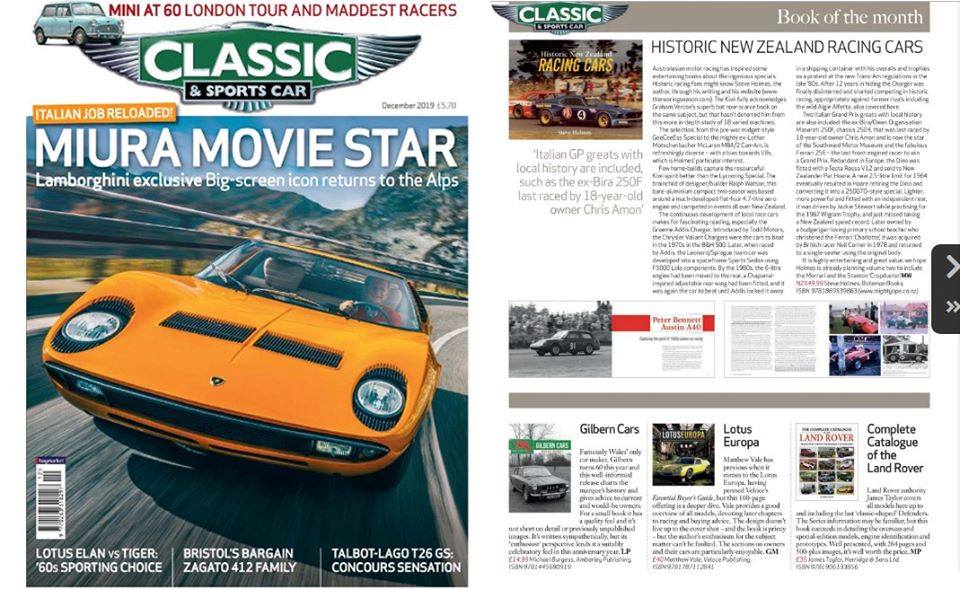
-
Administrator

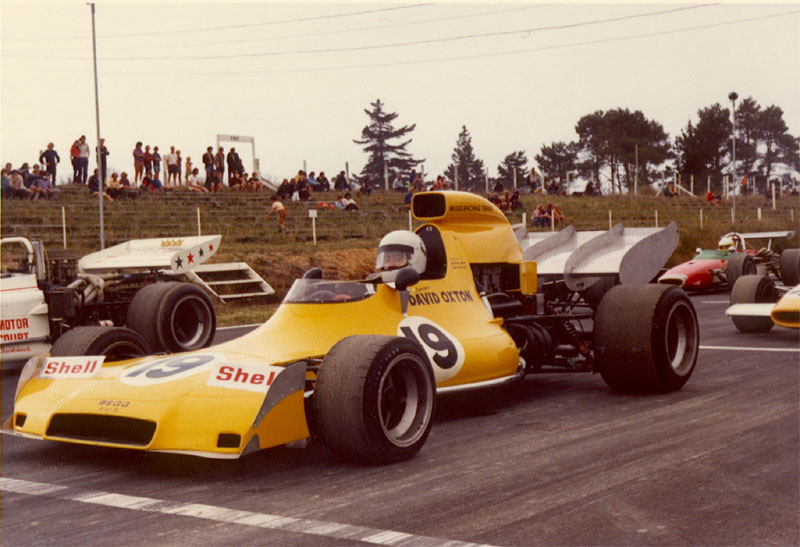
The FM5 was the fifteenth car to carry the Begg name. It was designed and constructed by the combined George Begg and Fred McLean partnership specifically for the Formula A/5000 regulations that were being used in many countries throughout the world by 1972. It would prove to be a highly successful car for the tiny Drummond team, one which would take them to the other side of the world.
Styling of the FM5 would be quite a radical departure from the teams previous F5000 efforts, the boxy FM2 and FM4. Much of this can be attributed to George Begg’s decision to acquire components from countryman Graham McRae, whose hugely successful McRae GM1 model was the car to beat in both the British Racing & Sports Car Club (BRSCC) European Formula 5000 series, the American L&M series, and the Tasman Series, throughout 1971 and 1972.
The McRae GM1 featured bulging rounded fuel-cells mounted in a very low position either side of the driver, which largely dictated its body shape. Following the 1972 Tasman Series, in which McRae was crowned champion, Begg purchased several items for the upcoming FM5, including fuel-cells, wheels, suspension, and uprights. In addition, he also purchased the Benoit Morand built fuel-injected Chevrolet used by McRae to win the Sandown Tasman Series race. During the race, the engine overheated quite severely, after losing much of its coolant, and McRae offered it to Begg at a discounted price, due to him not wanting to retain the motor, for fear of damage.
Much like the GM1, the shape of the new FM5 was largely influenced by its fuel-cells. As Begg himself explained in his book When The Engine Roars, ‘Fred and I spent hours discussing how the FM5 should look, although the rounded fuel-cells I had bought from Graham virtually dictated the shape. They were the newer bulging type which gave the car a similarly built appearance. That meant our car would have some exotic looking shapes over its body with curves going in several directions. Some extensive panel-beating would be required and after Fred and I had designed what we wanted, we gave the work to a young Invercargill panel beater to carry out’.
Indeed, this would be a very curvaceous, and quite attractive looking race car. Although the fuel-cells offered a similar central body shape to the GM1, the Begg would feature quite a different looking nose, influenced by a visit to an L&M race at Riverside Raceway, California, in 1972, where the new Derek Bennett designed Chevron B24 was competing. Begg was most impressed with this car. With its quarter-round fixed blunt nose, which differed to the adjustable winglets most manufacturers opted for, McRae included, Begg admired the Chevrons simple, clean shape, which also included very flat cockpit sides. This, Begg concluded, was a superior design to that which his team had already committed to, and this was confirmed to him when Chevron driver Brian Redmond won the race. The FM5 featured a similar style nose to that of the Chevron, and sprouted fences and splitters at each end.
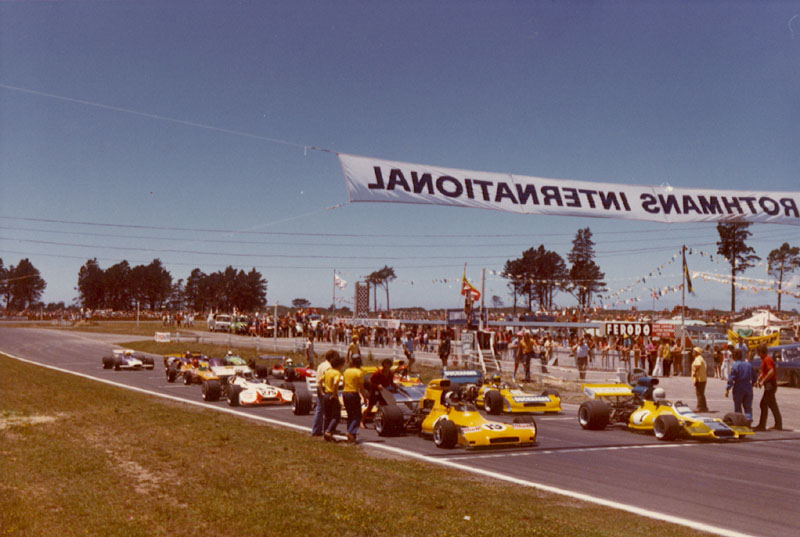
Fred McLean set to work constructing the aluminium monocoque tub, to which the Chevy motor would be fixed as a stressed-member, to help add rigidity and centralise most of the cars weight. The tub, without fuel tanks attached, weighed in at 32 kilograms, and was rigid thanks to the technique of sandwiching a 1 inch thick polystyrene slab between two aluminium sheets with glue to form the bulkhead. McLaren front wheels were used, along with Lockheed brakes. The McRae supplied Chevy motor was torn down and found to have suffered little apparent damage from its Sandown misadventure, and was rebuilt with new rings and bearings.
McLean proved highly adaptive in designing the FM5, typical of many New Zealand race car builders who didn’t enjoy the luxury of simply purchasing off the shelf parts, as those in the Northern hemisphere did. Other than the parts Begg was able to acquire from McRae, and Phil Kerr at McLaren, virtually everything was hand made either by McLean, or any number of talented fabricators in and around the Invercargill area.
Up to and including the FM5, most Begg race cars were painted yellow. And the swoopy new machine from Drummond was no exception when it made its race debut at Round 2 of the New Zealand Gold Star, held at Pukekohe on 12 November, 1972. George Begg had re-signed the talented youngster David Oxton, who’d won the 1972 New Zealand Gold Star in the Begg FM4, to drive the new car, which he promptly parked on pole, before going on to win by just over 1 minute from Garry Pederson in Oxton’s old FM4.
Oxton also won Round 3 at Ruapuna, before being ousted by Pederson in Round 4 at Levin, after a race-long battle between the two Begg combatants. The final round, at Bay Park, was to be contested over two heats, and joining the mix was Graham McRae, getting in a little action on Kiwi soil before the 1973 Tasman Series began in earnest one week later. McRae was fastest in qualifying, and took off to lead Heat 1 before retiring with a slipping clutch, handing victory to Pedersen from Oxton. McRae was a non-starter for Heat 2, and Oxton controlled the race from start to finish, winning his second Gold Star title in succession.
-
Administrator

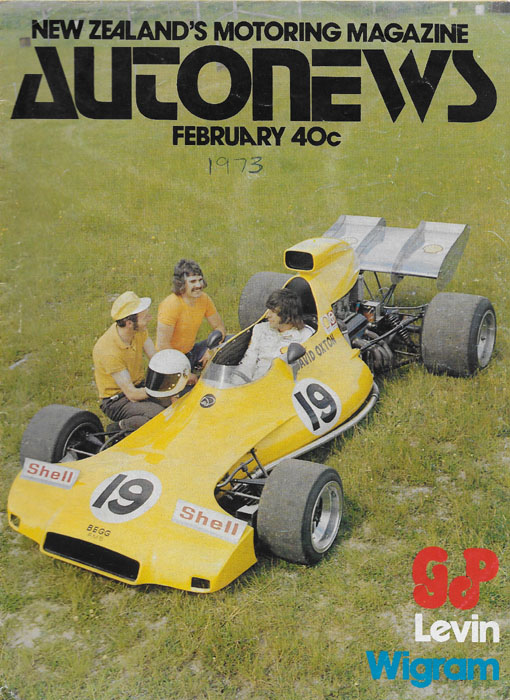
Pukekohe played host to the 1973 New Zealand Grand Prix, and the big field featured a star-studded cast of the worlds best Formula 5000 teams. The McRae GM1 was the car to have in 1972/73, and apart from McRae himself, Alan Rollinson, Evan Noyes, and Dexter Dunlop were all entered in customer cars. Australian driver/engineer Frank Matich appeared in a car of his own design, the Match A50, while Max Stewart, Warwick Brown, and Kevin Bartlett all had the latest wedge-shaped Lola 300, with its radical hip-mounted radiators, breaking away from the traditional nose mounted radiator design. John McCormack was entered in the impressive Australian built Elfin MR5.
Oxton, in just the Begg FM5s fifth race, qualified an impressive seventh, but was effectively eliminated when he and Frank Radisich collided in race morning practice. The team scrambled to make repairs before the race started, but the rest of the grid had already completed two laps before the yellow Begg barked into life and took off in pursuit. Alas, that pursuit would last just five laps before Oxton clunked one of the new Pukekohe chicanes, and retired.
Round 2 was held at Levin, and again, Oxton in the Begg would be the fastest of the local contingent, qualifying eighth. After 63 laps, he finished an impressive fifth. On to Wigram, for the coveted Lady Wigram Trophy, and once again Oxton was eighth in qualifying, before taking another fifth in the race. The final New Zealand leg of the Tasman Series was held at Teretonga, the Begg teams home race, and Oxton gave the enthusiastic local crowd something to cheer about, by qualifying seventh.
Just prior to race start, rain began to fall, and the little Begg team, who’d opted to run slick tyres, had no chance of switching to wets. Following a spin which dropped him down the field, Oxton pitted to change tyres, and after rotating the car again later in the race, wound up in ninth place at the finish.
George Begg had made an arrangement with Australian Lola driver Kevin Bartlett to organise his transport within New Zealand for the local Tasman Series races, with Bartlett doing the same for the Begg team for the four Australian rounds of the series. However, when plans to get the car and spares to Australia faltered, the Begg team was scratched. But George Begg, excited by the potential of his new steed, now had ambitions that extended far beyond Australia.
Back in September 1972, Begg had flown to England following an invite from Graham McRae, who asked him if he’d be interested in running the McRae factory, in Poole, Dorset. Begg had already worked a stint at McLaren in 1968, and was initially enthusiastic about the prospect of running the McRae operation. But upon closer inspection, he opted not to proceed. However, having taken in F5000 races in both the UK and US before returning home, Begg began hatching a plan to take his little team to England, to contest selected rounds of the Rothmans European Formula 5000 Championship.
The Begg team that competed in the European championship comprised an even smaller line-up than that which raced in New Zealand, and included Oxton, Begg himself, and Joe Wright, a New Zealand international race mechanic who had been working for McRae. Oxton had already competed on many of the British race tracks during his Formula Ford days.
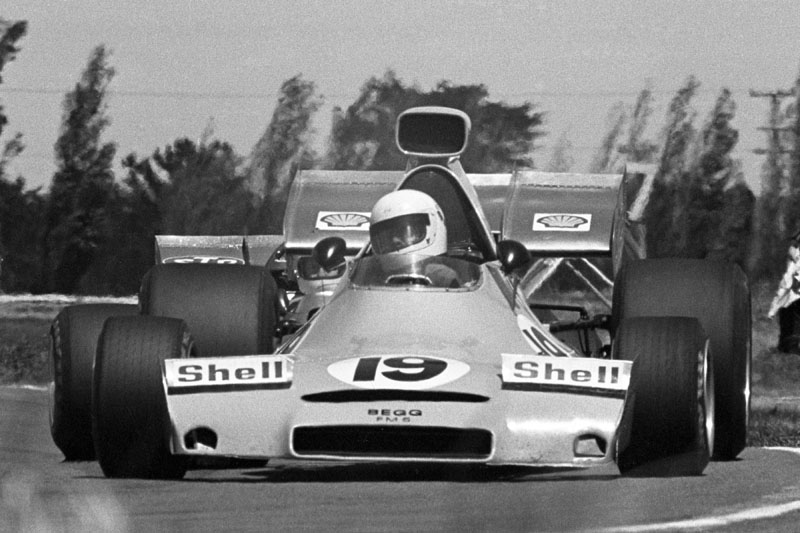
The Begg FM5, plus two spares engines and a container load of other parts, departed New Zealand in February 1973, and arrived in England one month later where the team had by now set up a temporary workshop in a disused factory in the small town of Earls Barton. They’d miss the opening round of the championship, held on 17 March, but would make Round 2, held at Mallory Park on 1 April. Qualifying was held on the Sunday morning of the race, with the race itself in the afternoon. Oxton began circulating in the difficult wet conditions of the first session, before the track dried for the second. However, an engine issue slowed his progress, and he qualified fourteenth, before the team made the decision to withdraw from the race, as they couldn’t change the engine in time.
The next event was the GKN-Daily Express Silver Jubilee International Trophy, held at Silverstone. This event had been running since 1949, and in 1972, the organisers arranged a headline act, pitting the top Formula 5000 cars against Formula 1 cars. This proved a popular addition to the format, and was repeated again in 1973. In addition, the F5000s would get their own 25 lap race as part of their championship. Of the Begg FM5, all the way from New Zealand, the event programme read; ‘From New Zealand comes the interesting Begg FM5 Chevrolet driven by their champion driver, 26-year old David Oxton. From Drummond, Invercargill, the Begg is the hobby of George Begg whose business is the manufacturer of agriculture equipment for the farming industry. Long, low and sleek, it is a thoroughly professional machine – far from agricultural’.
In qualifying on the high-speed Silverstone layout, the Begg’s nose began to crack from the heavy loads being applied to it. The team attached sections of aluminium to add strength, and Oxton went out and qualified twelfth fastest. In the race, held on Saturday, despite the tyres not working as he would have liked, Oxton climbed right through the field to finish an impressive fifth, behind three of the latest Lola T330s, and a Chevron B24. Understandably, the tiny New Zealand team were overjoyed.
-
Administrator

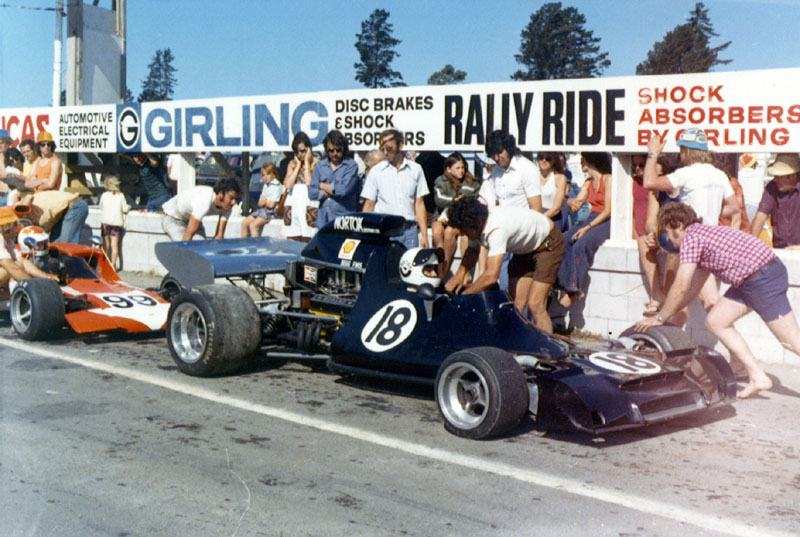
Sunday saw the running of the 40 lap International Trophy, combining the F1 and F5000 cars. Impressively, the top F5000 car of David Hobbs recorded a time that was faster than the previous years Formula 1 lap record, and would ultimately line up on the third row, in the 3-2-3 grid formation. The Begg team had no illusions of grandeur. Indeed, even in the impressive F5000 championship, which in 1973 was enjoying its most competitive season yet, they were realistic about their prospects.
Oxton started the International Trophy race in 24th, and struggled throughout the on tyres that were not suited to the icy conditions. However, he worked his way to 15th as the laps wore down. But so cold was it that with a handful of laps remaining, a snow shower struck the circuit, and Oxton went spearing off the track, with the car stalling and unable to re-join. Regardless of the outcome, the Begg team notched this up as a highly successful and enjoyable weekend.
Round 4 of the championship was held at Snetterton, and here Oxton and the Begg looked like genuine contenders. In changeable weather conditions, Oxton qualified fourth fastest. However, any chances of a good race result were scuppered immediately following the rolling start, when the Begg failed to accelerate with the rest of the field. After an initial stutter, the motor cleared. Oxton had lost several positions, but battled on to finish seventh.
Following the race the team went in search of the fault, eventually identifying a fuel pressure problem which starved the engine on acceleration. Once this was rectified, they took the car to Brands Hatch for some testing, with Oxton recording competitive times. Brands Hatch played host to Round 5, this being the big Easter weekend event which attracted a large entry.
Oxton spent the first portion of qualifying with a fuel pressure gauge taped to the side of the cockpit, so the team could be confident the fuel pressure problems had been rectified. Once they were sure, he set off again, and put his head down to set a fast time for the race. But immediately the heavens opened, and any chance of a good starting position was now impossible.
Come the race, and the bright yellow Begg would start from 14th on the grid. Worse still, heavy rain was falling, making driving treacherous, and visibility near impossible. After slithering around for the first few laps, Oxton was belting down the front straight when suddenly the Begg flicked into a spin after hitting a bump. It shot to the outer guard rail and proceeded to destroy itself as it made its way towards the first turn, still grinding along the guard rail. When eventually it came to rest, Oxton sprang from the smoldering wreck, lept several walls and fences, and eventually sat down in the safety of the nearest spectator grandstand.
Three weeks separated Brands Hatch from the next round at Oulton Park, and the team would use all that time to tear the car down and rebuild it. Virtually all the bolt-on components down the left side had been ripped off along the Brands guard rail, while the tub itself also suffered a small amount of damage. Upon reassembly, the bodywork would require a new coat of paint, and it was at this point the decision was made to switch from traditional Begg yellow, to black, in a desperate attempt to encourage a change of luck. But that was short-lived, as a front wishbone broke during qualifying, with Oxton fortunate not to wreck again. He qualified ninth with an unwieldy car, and in yet another wet race, finished in the same position.
Following Oulton Park, the team went testing at Silverstone, and clearly they made some significant improvements, for at the next round, held at Mallory Park, Oxton qualified third fastest. Come the race, and he held his starting position for much of the duration, until picking up a slow puncture from stones flicked up off the track. With the tyre deflating, Oxton continued to push, but lost two positions towards the end, finishing an eventual fifth. Luck had deserted the Begg team, but at least the speed was there.
The next round of the championship was held at the Misano circuit in Italy. The European F5000 Championship organisers contacted several of the teams offering travel expenses to Italy, the Begg team included. With a Ford Transit as tow vehicle, it took the small team of George Begg, David Oxton, and Joe Wright three days to reach Misano. In free practice, Oxton and the Begg were lapping quickly, recording one of the fastest times. However, in a bizarre decision, the local council decided the F5000 cars were too fast and dangerous for the track, and promptly cancelled their participation. At that, the Begg team loaded up and headed back to England.
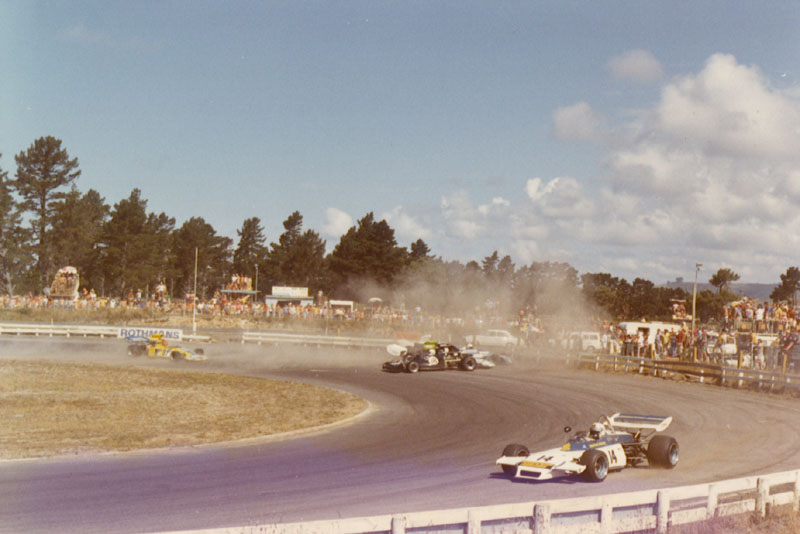
Round 9 was due to be held at Zandvoort, in the Netherlands. However, this event was cancelled following pressure from Formula 1 teams claiming the F5000s could cause damage to the track, at which Round 10 of the F1 World Championship was due to be held four weeks later. Therefore, it was back at Mallory Park the F5000 teams assembled again next. For the Begg team, however, this was to be a shortened event, when the engine suffered a failure in qualifying, with no time to change it for the race.
Next up was Mondello Park, in Ireland, and Oxton struggled in qualifying, eventually lining up twelfth, albeit, just 8 tenths off pole position. The racing was contested over two heats, the first of which saw the Begg finished tenth. In Heat 2, rain fell just prior to the start, but the Begg team gambled on the track drying during the race, a gamble which paid off, with Oxton coming home in fifth.
-
Administrator

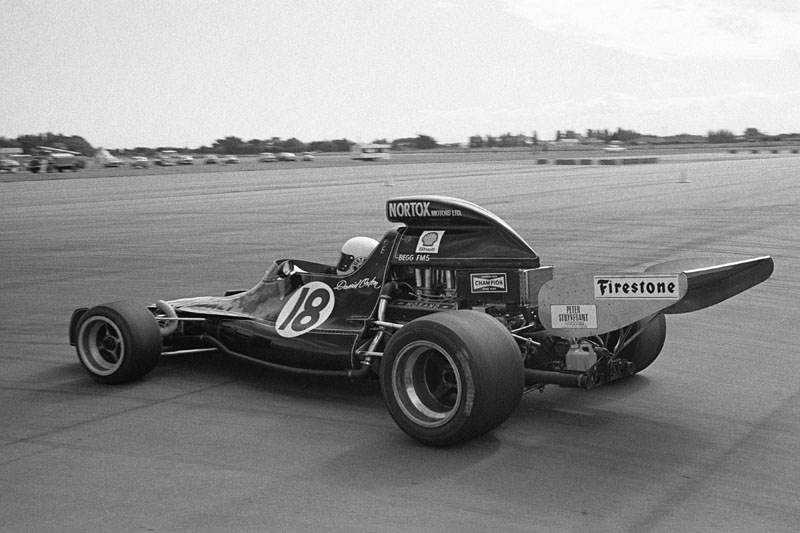
Mondello Park would be the last race in which George Begg would see his car compete in the British Isles. He'd made the decision that Silverstone, which followed Mondello Park, would be the last for the team before heading back to New Zealand. But he'd made a commitment to take his family on holiday through Europe, and so would miss Silverstone. Oxton was the fastest qualifier for much of the session, before being pushed back to fifth. There was reason to be optimistic. But the race never happened. Heavy rain saw the circuit soaked, and the organisers declared the event cancelled.
The Begg was shipped back to New Zealand so it could be prepared for the upcoming Gold Star and Tasman Series events over the summer of 1973/74. However, George Begg would not be the entrant. He'd made the decision to cut back on his motor racing commitments, and agreed a deal to sell the FM5 to Oxton.
The New Zealand Gold Star began at Pukekohe on 4 October, 1973, and Oxton won at a canter. After placing runner-up to Graham McRae in Round 2, he won both Heats in Round 3, followed by another victory in Round 4. Australians Kevin Bartlett and Johnnie Walker took the top two positions in Round 5, as they sought to gain some experience on the new Manfield circuit ahead of the upcoming Tasman Series. Oxton was third. A new motor caused problems for Round 6, where Oxton could do no better than fourth, but he was back on top again for the final, taking a Heat 1 victory, and runner-up spot in Heat 2 to comfortably claim his third Gold Star Championship on the trot.
Once again it was an impressive entry for the Tasman Series, kicking off with the Levin International in January 1974. Oxton qualified and finished seventh. For the Pukekohe International, he lined up an impressive fourth, going one better to take a podium in the race.
Due to the Commonwealth Games being held in Christchurch in 1974, the New Zealand Grand Prix switched from its regular home at Pukekohe, to Wigram. Oxton qualified seventh, but was battling for a podium spot throughout the race. Neither he nor the Begg name had ever been on the podium at the New Zealand Grand Prix, however, a flying Peter Gethin, who'd pitted early in the race to replace a punctured tyre, stormed through the field to pass Oxton for third with two laps remaining. At Teretonga, Oxton qualified eighth, but finished only tenth after a couple of punctures.
The Tasman Series moved across to Australia for Round 5, at Oran Park, where Oxton qualified ninth, but suffered engine failure in the race. At Surfers Paradise he qualified tenth and finished ninth, before qualifying tenth once more at Sandown, this time coming home eighth. The final Tasman Series round, held at Adelaide Raceway, produced a better result, where, after qualifying eleventh, Oxton finished a strong fifth.
Incidentally, a second FM5 tub had been partially constructed in the Drummond workshop, intended as a spare for the Oxton machine. This was never used, and indeed, was purchased by Alan McCully, who constructed a slightly longer wheelbase FM5 in 1974, with a Bartz built Chevrolet motor. With this car, McCully debuted the car in Round 3 of the Gold Star, qualifying and finishing second to Oxton. He finished second in Heat 2 at Manfeild, one place ahead of Oxton, and won Heat 2 at Levin.
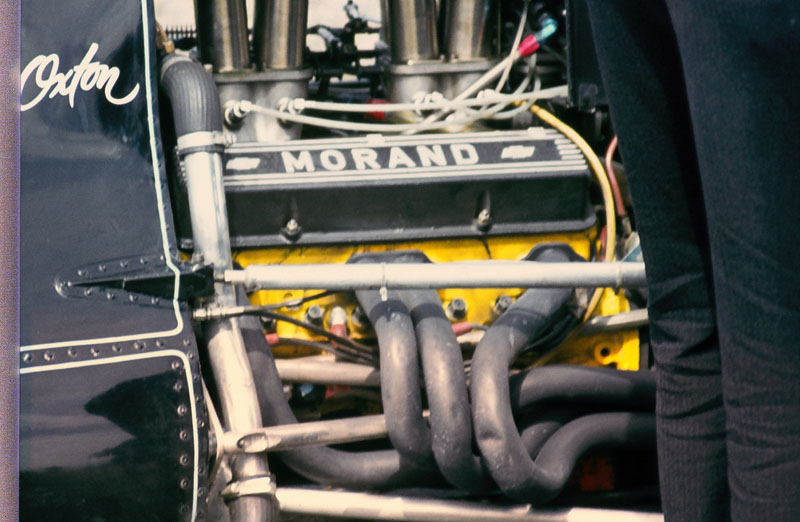
The McCully FM5 claimed an impressive second place in the Levin Tasman Series race, failed to finish Pukekohe, placed seventh at Wigram, and sixth at Teretonga. McCully didn't take the car to Australia.
The Adelaide round of the Tasman Series would be the last race for Oxton in the Begg. He sold the car to Frank Bray, who contested the 1974/75 Gold Star, against the latest (and last) race car to carry the Begg name; the 018, so named because Fred McLean was no longer working with Begg, and because this was the 18th race car to carry the Begg name. The Begg 018 would be driven by Jim Murdoch, who was also heavily involved in its design and construction.
For the former factory team Begg FM5 of Frank Bray, this was to be a less successful season, as new technology had raised the bar. Highlights were fifth in the Manfield International, which featured several top overseas teams preparing for the upcoming Tasman Series, and fourth for the Gold Star race at the same event. Bray borrowed Bill David's Brabham BT29 for the first two rounds, as the Begg was not ready, and he skipped the final two South Island races. Bill David drove the car during the 1975/76 Gold Star, but by now it was largely uncompetitive against the latest machines.
-
Administrator

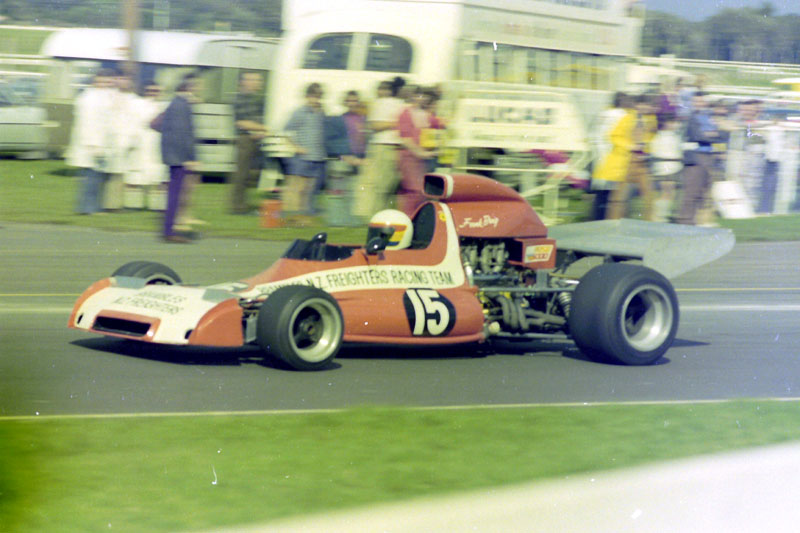
Formula 5000 had quickly grown from its inception in Sports Car Club of America (SCCA) competition in 1967, to a formula that was being contested throughout the world just a few years later. However, its demise was nearly as sudden. The last New Zealand national championship in which F5000 cars were eligible, was the 1976 Gold Star, held during October and November of that year, before the new international 1,600cc Formula Atlantic cars were ushered in for the 1977 Tasman Series, held in early 1977. To that end, all the old F5000 cars were deemed ineligible, and had nowhere to race. Australia continued with the formula, long after the rest of the world had given up on it, and several New Zealand owned 5000 cars were sold across the Tasman.
The Begg FM5, however, was eventually purchased by Len Southward, and added to his vast collection, where it remains on display at the Southward Car Museum, just north of Paraparaumu. On occasion it is brought out to run demonstrations, but it hasn't raced in anger since 1976. Its painted black, as it had done in the 1974 season, and remains a legacy to George Begg and Fred McLean, and of Kiwi ingenuity; of building race cars in New Zealand, and taking on the world, a concept that, even by 1972, was fast becoming a dieing art.
End.
Thanks to Terry Marshall, Peter Hanna Collection, Graeme Bennett for the photos that appear here. These are just a small sample of those featured in the book.
-
World Champion

Have the book Steve, Great the story is here too !! - Especially with George Begg Races recently ..
-
August 5th 1973. Silverstone.
David Oxton driving the Begg-FM5 back to the pit area after the F5000 race was cancelled due to rain.
Holding the umbrella behind him is a young 27 yr. old Dick Bennetts (who went on to have a great career in racing. See attached article.)
Beside him is David's NZ mechanic, Joe Wright.
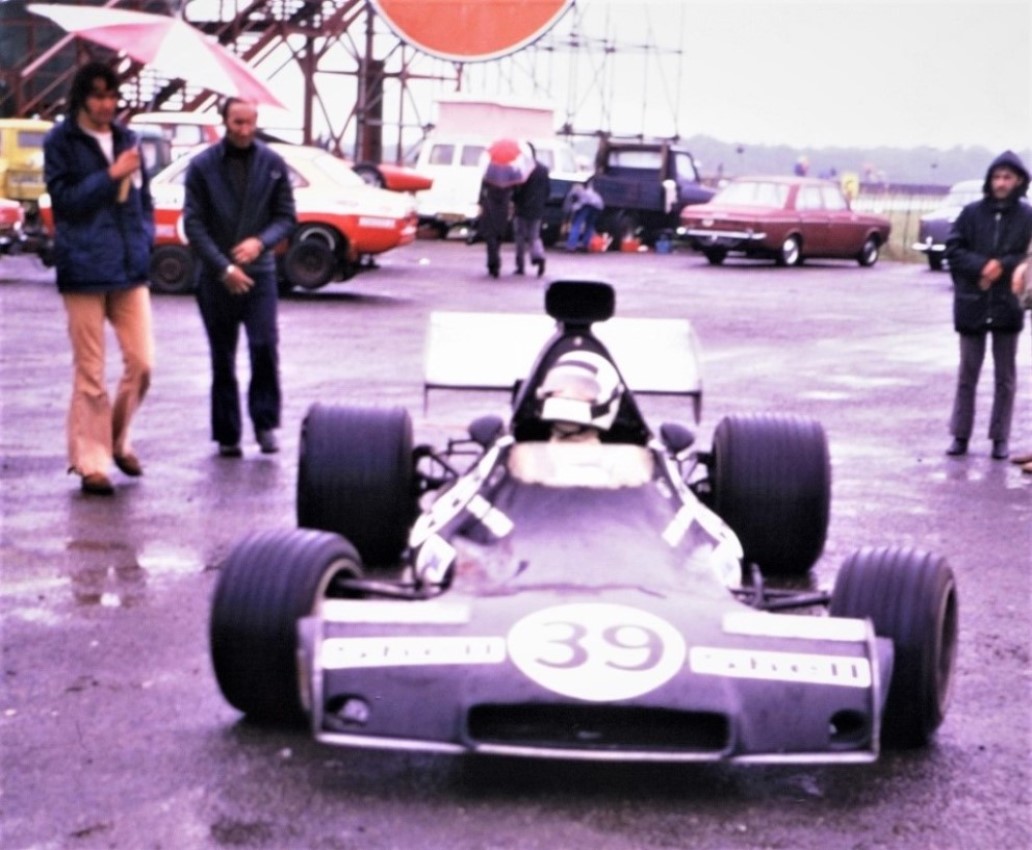
(Ken Hyndman photo.)
A recent Dick Bennetts article.
https://www.motorsportmagazine.com/a...-dick-bennetts
 Posting Permissions
Posting Permissions
- You may not post new threads
- You may not post replies
- You may not post attachments
- You may not edit your posts
-
Forum Rules





 Reply With Quote
Reply With Quote
